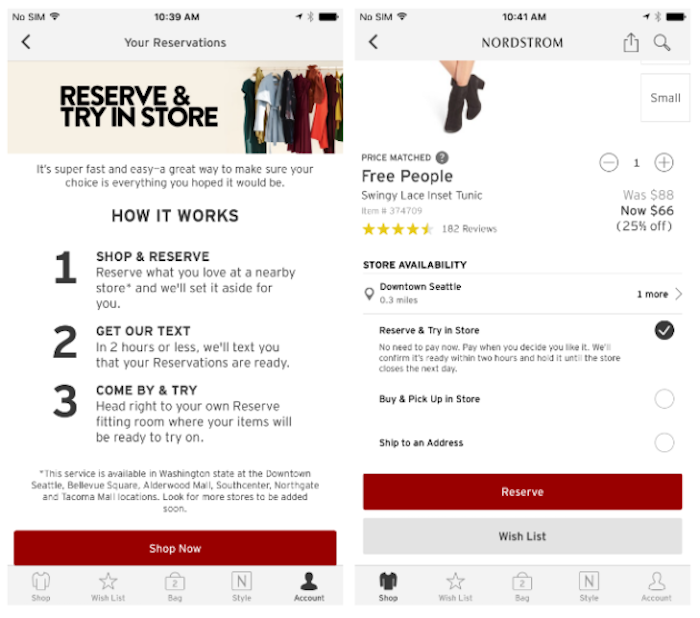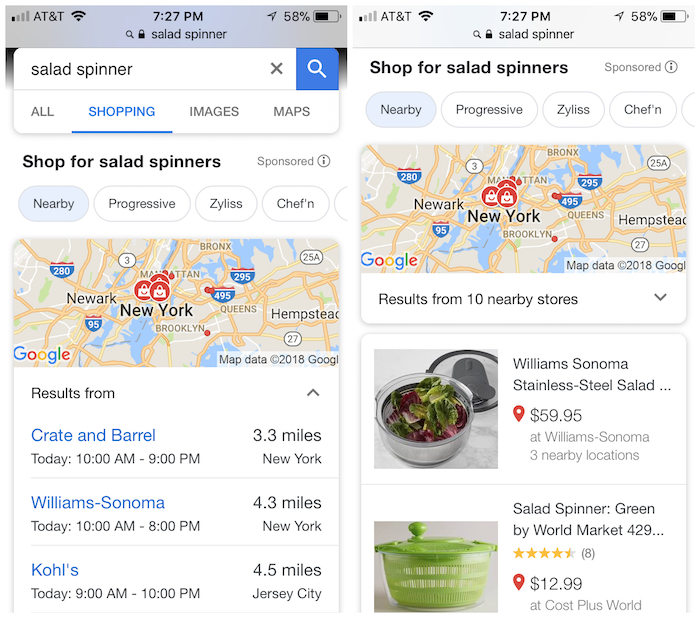Digitally-Influenced Sales: How Mobile Technology Helps Convert Across All Channels
Ecommerce has been on a growth trajectory since its beginning, yet despite the increased role of ecommerce year over year, it totals less than 10% of all retail sales. For now. It may be tempting to leave it here; however, the 10% number neglects a crucial factor: digitally-influenced sales.
“The mobile phone is the ultimate bridge between digital and physical.” – SweetIQ
Mobile devices are a vital channel for this influence. According to a new report from Adobe Digital Insights (ADI), smartphone visits are growing more valuable for retailers. To arrive at this conclusion, ADI tracked various websites, and found that mobile traffic to these sites surged 89% from early 2015 to 2017. Once people land on a mobile site, they are also becoming more likely to buy. As Mobile Marketer explains, “Smartphone revenue-per-visit has risen from about one-fifth the level of desktop to about one-third since 2015, narrowing the value gap between smartphone and desktop visits by 10 percentage points.”
Related: 9 Ways to Reduce Mobile Friction
All of this points to the growing emphasis on mobile-first development for ecommerce. At Command C, we’re helping our clients get in front of the curve by optimizing the UX for mobile, along with other projects. While doing so, we stay mindful of the big picture. An optimized mobile site is now the cornerstone of successful ecommerce–yet it’s also a springboard. Today we’re going to share about mobile technologies that help retailers sell through other channels, such as physical stores, beyond the phone.
Mobile Loyalty Programs: More Relevant than Ever

Loyalty programs have long been a retail staple. Now with the increasing importance of personalization, loyalty programs are taking on a deeper significance in ecommerce. These programs can engage customers through rewards, discounts, annual cash back for purchases, or perks for a fee (e.g. Amazon Prime). When customers enroll in loyalty programs, they create profiles that allow retailers to observe their purchases over various channels.
(Important note: We are always talking about shoppers’ explicit agreement to share their information. Not only is this the right way to do business, it’s imperative in this era of data breaches and regulations like GDPR.)
For retailers, the key is to offer such appealing benefits that shoppers will willingly share their personal information and enroll. This is especially true for “mobile prodigies,” a term coined by Verve, that refers to “millennials and Gen Z consumers whose proficiency with their mobile devices is highly developed and evolving.” In Verve’s report, The Rise of Mobile Prodigies, they spell it out like this: “If we serve mobile prodigies best-in-class mobile experiences, they are willing to share their personal information – their permission comes down to relevance and reward.”
On March 20th, Retail Dive published findings by a Bond Brand Loyalty study that supported this idea, “87% of loyalty program members were open to having their activities and behavior ‘watched, monitored, and tracked’ in exchange for personalized rewards.” The study also found “85% of respondents saying their experience was improved by mobile redemption capabilities” which included benefits like cash-less checkout and location-based offers.
Engage Customers During Mobile Journey

A recent webinar by BounceX and BigCommerce discussed a range of ideas to engage and get to know your customers during their mobile product searches. One of them is really sticking with us: When shoppers filter a search on your mobile site, ask them, “Would you like these products emailed to you?”. So simple, right?
In the example above, I searched f0r jackets on Urban Outfitters on my phone. On the left side, the jackets were filtered by color (green). On the right, I searched by brand. Now imagine a small pop-up encouraging me to email these search results to myself. (Please no screen-gulping pop-ups; see how Williams & Sonoma handles email prompts on mobile.)
Simply stated, customers use filters to find what they are looking for on your site. Retailers have the opportunity to use shopper searches as a way to connect. How can you preserve this search for them? Wish Lists and “Save for Later” are great, too, but if you require an account log-in, please make it super streamlined for mobile.
Then when you email your shopper the results of her product search, adding in a coupon for in-store or online purchases will sweeten the deal.
Mobile Dressing Room with Physical Store Try-ons

In the name of preserving the shopper’s search, Nordstrom entices mobile shoppers into their stores in a very compelling way.
We draw inspiration from a range of retail experiences, and here Nordstrom is rocking it. Much like “Would you like these products emailed to you?” preserves product searches for the customer, so does Nordstrom’s feature, “Reserve and Try In Store.” And it goes a step further because it’s getting shoppers into their stores!
They first launched this service as a pilot program in 6 stores in 2016. Due to popular demand, last fall they expanded it to nearly 40 stores across the United States. Nordstrom’s SVP of Customer Experience, Shea Jensen, said, “Many of our customers like to feel and try on clothes and shoes before they purchase them and we’re excited to offer them a more convenient way to do so.” Talk about knowing your customers.
40% of Mobile Searches Have Local (Physical) Intent

In their report, The Future of Local, SweetIQ writes, “The mobile phone is the ultimate bridge between digital and physical.” We’ll bet that the people at Google would agree. In developing their Micro Moments concept, they learned that 40% of mobile searches have local intent. Furthermore, 50% of people who do a local product search on their phone, visit a store within a day. Also, keep in mind, lots of consumers shop on their phone within a store. As Retail Dive published earlier this month, Shopping Is Going Mobile – In-store and Out.
Lastly, we’ve all heard the concern that ecommerce would put local shops out of business. Thankfully, something unforeseen is developing, as ecommerce, and mobile shopping in particular, could hold the key to Main Street’s Comeback.
To wrap up, we’ll share a quote from a recent podcast of the Jason & Scot Show. In this episode, the hosts discussed comments by Brian Cornell, the CEO of Target, in which he emphasized that most sales still take place in physical stores. In response, the podcast hosts gave an analogy for today’s interplay between ecommerce and brick and mortar stores, “It’s like the old retail guy saying ‘the only profitable part of our store is the POS [point of sale] because that’s where all the sales are driven. And the shelves don’t drive any sales, so they are less valuable and we should not invest in the shelves.” It makes no sense, right?
Let’s put together the plan for your retail store that will make sense–and profit–for the future.
